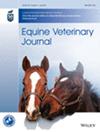Inflammation and response to bacterial infection as potential drivers of equine odontoclastic tooth resorption and hypercementosis: A proteomics insight
Abstract
Background
Equine dental diseases significantly impact a horse's overall health, performance and quality of life. They can result in secondary infections and digestive disturbances, potentially leading to colic. A recently described disease affecting the incisors of horses is equine odontoclastic tooth resorption and hypercementosis (EOTRH). Understanding EOTRH is crucial for early diagnosis, effective management and prevention of its severe consequences.
Objectives
To determine proteomic differences in incisor cementum in horses with and without clinical EOTRH.
Study design
Comparative and observational clinical study.
Methods
Teeth were extracted (N = 5) and cementum was isolated using a diamond wire. Proteins were extracted using an optimised sequential workflow, and trypsin was digested for mass spectrometry. Protein identification and label-free quantification were undertaken.
Results
In total 1149 unique proteins were detected in cementum across all samples. We identified four proteins exclusively in EOTRH-affected cementum. EOTRH samples showed a higher heterogeneity than healthy samples. In total, 54 proteins were increased in EOTRH, and 64 proteins were reduced (adjusted p-value <0.05). Inflammatory proteins, such as cathepsin G (p = 0.004), neutrophil elastase (p = 0.003), bactericidal permeability-increasing protein (p = 0.002), azurocidin (p = 0.003) and lactotransferrin (p = 0.002) were all increased in EOTRH. Pathway analysis revealed that antimicrobial peptides (Z score 2.65, p = 1.93E−09) and neutrophil degranulation (Z-score 1.89, p = 1.7E−04) were commonly up-regulated canonical pathways.
Main limitations
The sample size was limited. Lack of age-matched healthy controls.
Conclusion
EOTRH leads to biochemical changes within the cementum proteome, which are important in explaining the physiological changes occurring in disease. Differentially abundant proteins may represent promising biomarkers for earlier disease detection and the establishment of a cell-based model could provide further insight into the role these proteins play in hypercementosis and resorption.

 求助内容:
求助内容: 应助结果提醒方式:
应助结果提醒方式:


